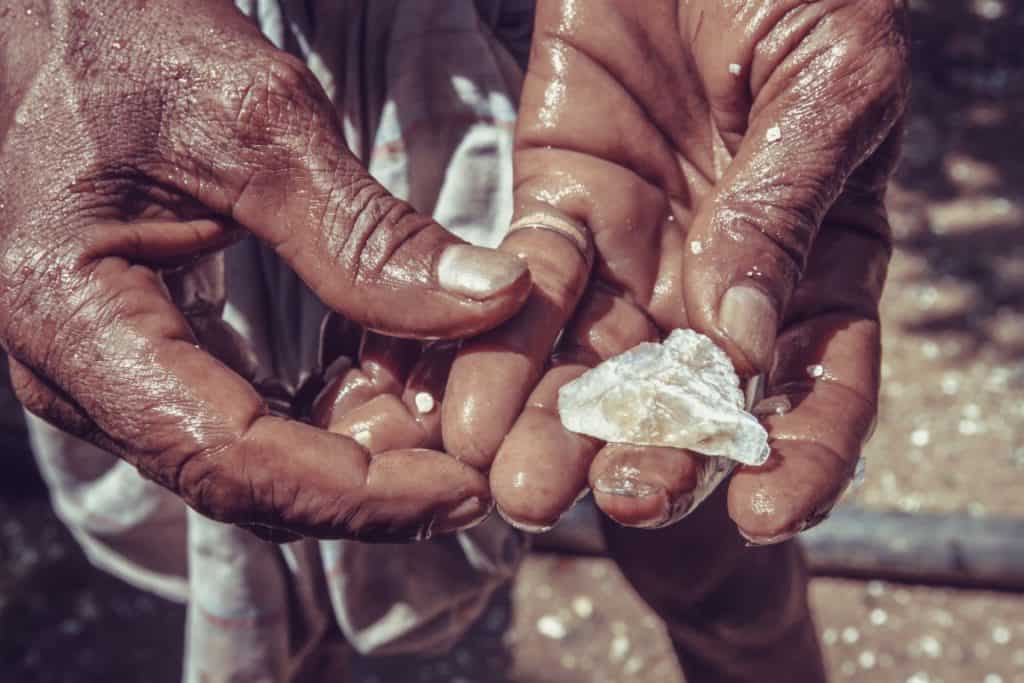When it comes to celebrating love and commitment, few things are as iconic as engagement and wedding rings. Sustainable engagement rings offer a responsible choice for couples. Opting for recycled metals and ethically sourced stones minimizes environmental harm. Additionally, consider lab-grown diamonds, which provide a stunning alternative without the ecological footprint associated with mining.
These symbols of eternal devotion have a long history, but in today’s world, they also come with a growing concern for their environmental impact. In this comprehensive article, we will explore the environmental footprint of lab grown diamond rings and wedding rings versus traditional mined diamonds.

We’ll take a close look at the entire lifecycle of these precious tokens of love, from their creation to the moment they adorn your finger.
Understanding Lab-Created Diamonds
Before we dive into the environmental comparison, let’s first understand what lab-created diamonds are and how they differ from their mined counterparts.
Lab-created diamonds, often referred to as synthetic or cultured diamonds, are grown in controlled laboratory environments. These diamonds are created using advanced technological processes that replicate the natural diamond-growing conditions deep within the Earth’s crust. The result is a diamond that is chemically, physically, and visually identical to a mined diamond.
The Eco-Friendly Appeal

One of the primary reasons why lab-created diamonds have gained popularity is their eco-friendly appeal. Let’s explore why these diamonds are perceived as a greener choice.
Reduced Carbon Footprint
One of the most significant environmental advantages of lab-grown diamonds is their significantly reduced carbon footprint. Traditional diamond mining involves extensive excavation, transportation, and energy consumption. In contrast, lab-created diamonds require far less energy and result in fewer carbon emissions.
The Environmental Impact of Mined Diamonds
Now that we have an understanding of lab-created diamonds, let’s turn our attention to the environmental impact of mined diamonds.

1. Deforestation and Habitat Destruction
The process of mining diamonds often involves clearing vast tracts of land, leading to deforestation and habitat destruction. This disruption of ecosystems can have far-reaching consequences for local wildlife and biodiversity.
2. Water Usage and Pollution
Diamond mining operations consume substantial amounts of water. Additionally, the chemicals and pollutants used in the extraction process can contaminate nearby water sources, posing a threat to aquatic life and communities downstream.
3. Energy Intensity
Mined diamond extraction is an energy-intensive process. The machinery used in mining operations relies heavily on fossil fuels, contributing to greenhouse gas emissions and climate change.
The Diamond Supply Chain
To better understand the environmental impact, it’s essential to examine the entire diamond supply chain.
Mining
In the case of mined diamonds, the journey begins with exploration and excavation. This involves drilling, blasting, and hauling away massive amounts of earth and rock. The extracted material is then processed to isolate the precious diamonds.
Transportation
Once extracted, diamonds need to be transported to cutting and polishing facilities, which are often located far from the mining sites. This transportation involves fuel-guzzling vehicles and can result in additional carbon emissions.
Cutting and Polishing
Diamonds, whether lab-created or mined, require precision cutting and polishing to achieve their dazzling brilliance. This step involves skilled artisans and machinery, consuming energy and resources.
Retail
Finally, diamonds reach retail stores, where they are set into engagement and wedding rings, symbolizing the eternal love between couples.

Lab-Created Diamonds in Focus
Now, let’s shine a spotlight on lab-created diamonds and assess their environmental impact at each stage of the supply chain.
Diamond Growth
The process of growing diamonds in a lab involves high-pressure, high-temperature (HPHT) or chemical vapor deposition (CVD) techniques. While energy is required for these processes, it is generally lower compared to the energy-intensive mining operations.
Transportation
Lab-grown diamonds, being created in controlled environments, eliminate the need for long-distance transportation from mining sites to processing facilities. This greatly reduces carbon emissions associated with transportation.
Cutting and Polishing
Similar to mined diamonds, lab-grown diamonds require cutting and polishing to enhance their beauty. However, the energy-intensive processes are generally more efficient and controlled in a laboratory setting.
Retail
Lab-grown diamonds, once ready for sale, follow the same retail path as mined diamonds. They are set into jewelry and made available to consumers.
Insurance
Wedding ring insurance is a prudent step for couples looking to protect their valuable and sentimental jewelry. Whether it’s a lab-grown diamond or a mined one, wedding rings hold immense emotional and financial significance.
Insurance can provide peace of mind in the unfortunate event of loss, theft, or damage to these precious symbols of love. Lab-grown diamonds, with their rising popularity, are no exception. Their affordability and ethical appeal make them an attractive choice for many couples. Ensuring your lab-grown diamond wedding ring is properly insured ensures that your commitment is safeguarded, allowing you to focus on the joyous moments of your journey together.
Certifications and Ethical Considerations
When it comes to choosing between lab-grown and mined diamonds, ethical considerations also play a significant role. Consumers are increasingly looking for certifications and assurances regarding the origin and ethical sourcing of diamonds.
Kimberley Process Certification
The Kimberley Process Certification Scheme is a global initiative aimed at preventing the trade of “blood diamonds,” which are diamonds mined in war zones and sold to finance armed conflict against governments. Both lab-grown and mined diamonds can be certified under this scheme.
Lab-Created Diamond Certifications
Lab-created diamonds often come with additional certifications, such as the International Gemological Institute (IGI) certification. These certifications confirm the authenticity and quality of lab-grown diamonds.
Consumer Awareness and Choice
As consumers become more environmentally conscious, their choices have a significant impact on the diamond industry. Many jewelry brands are now offering both lab-grown and mined diamonds, allowing customers to make informed decisions based on their values and preferences.
Conclusion
The environmental impact of lab-created diamonds versus mined diamonds is a multifaceted issue. While lab-grown diamonds generally have a lower carbon footprint and fewer environmental consequences, the choice ultimately depends on various factors, including ethical considerations, certifications, and personal preferences.
In this age of sustainability and eco-consciousness, the jewelry industry continues to evolve, offering consumers more choices than ever before. Whether you opt for a lab-grown diamond or a mined one, the key is to make an informed choice that aligns with your values and contributes to a greener future. The choice is yours, and the sparkle is guaranteed.
